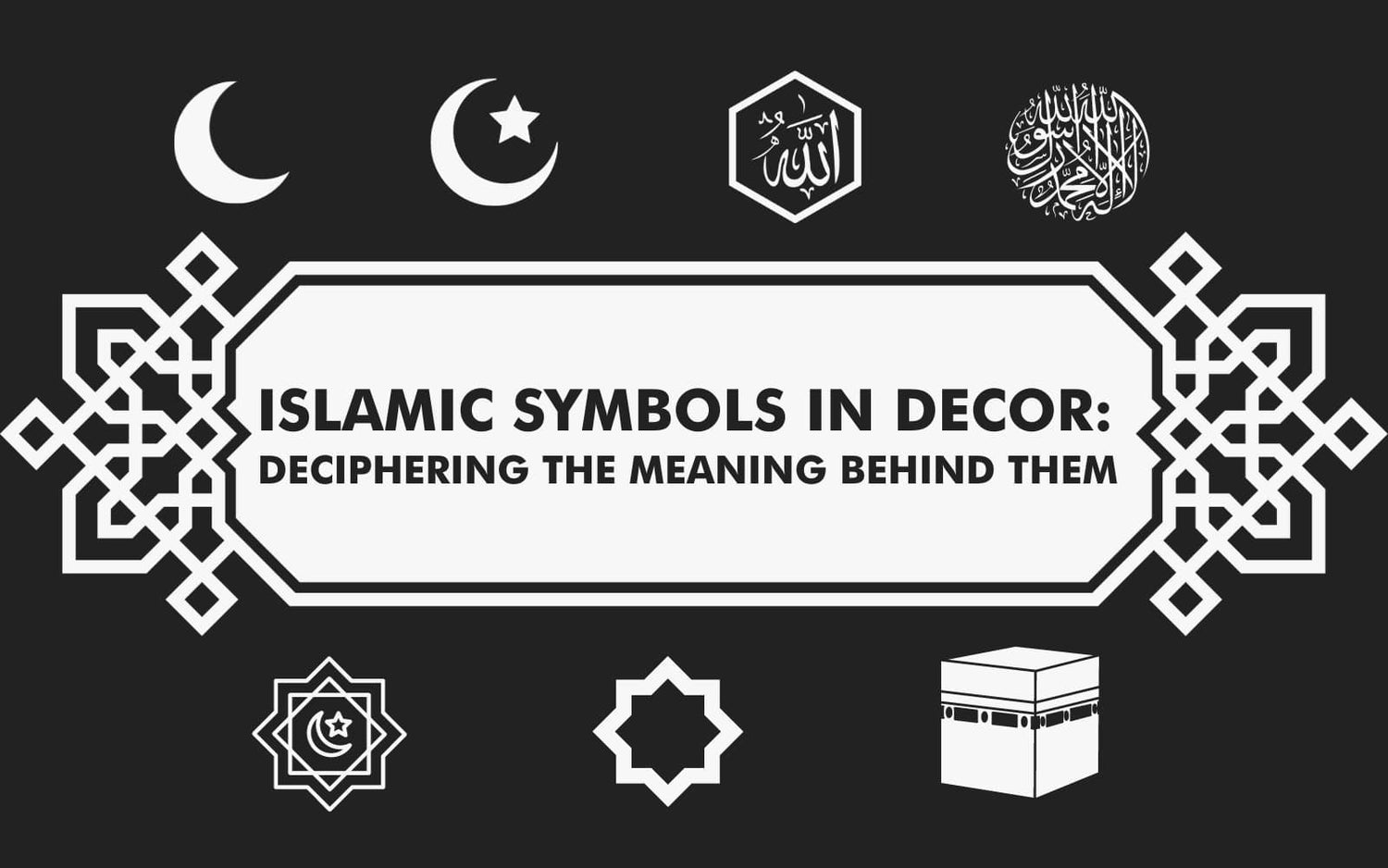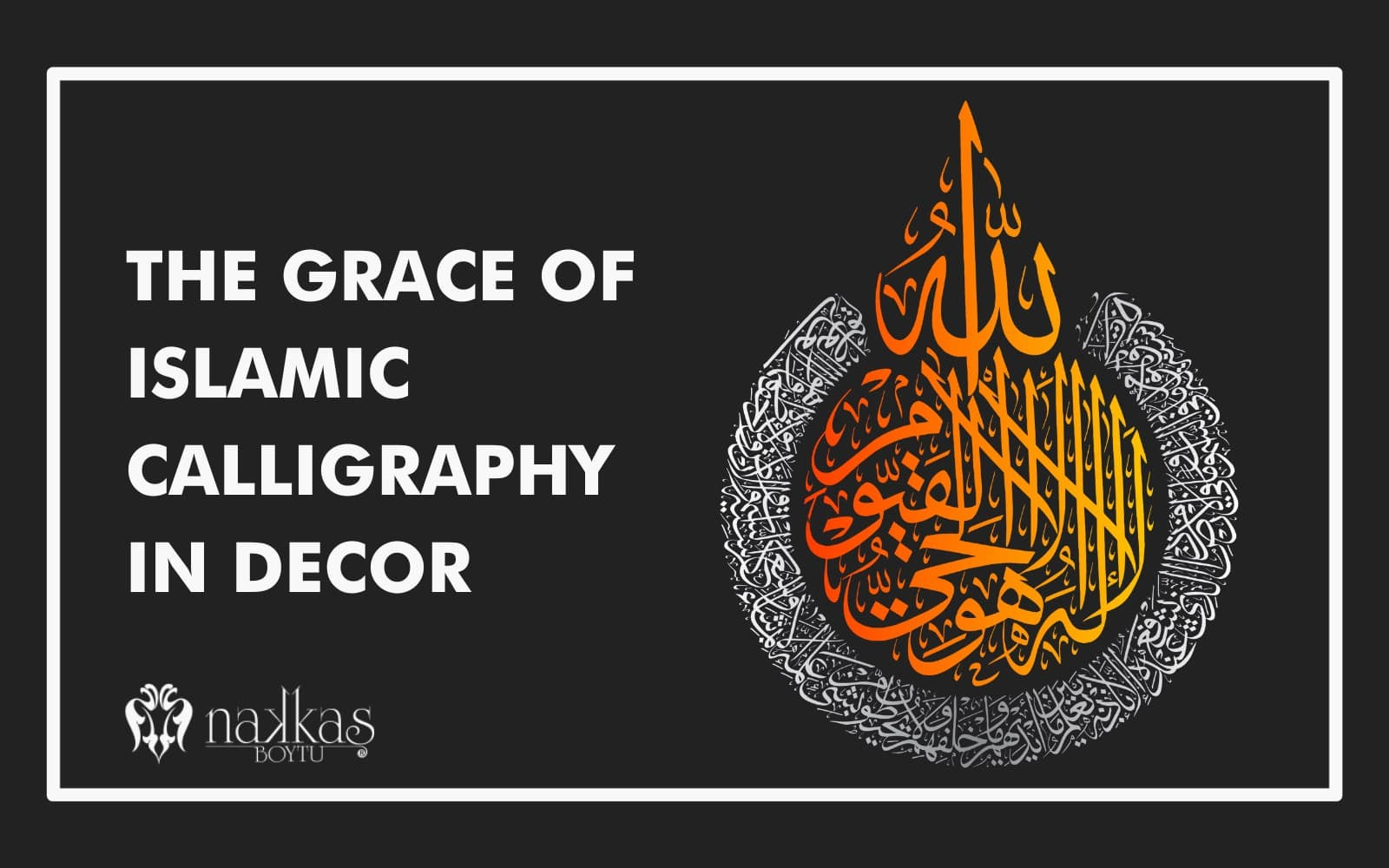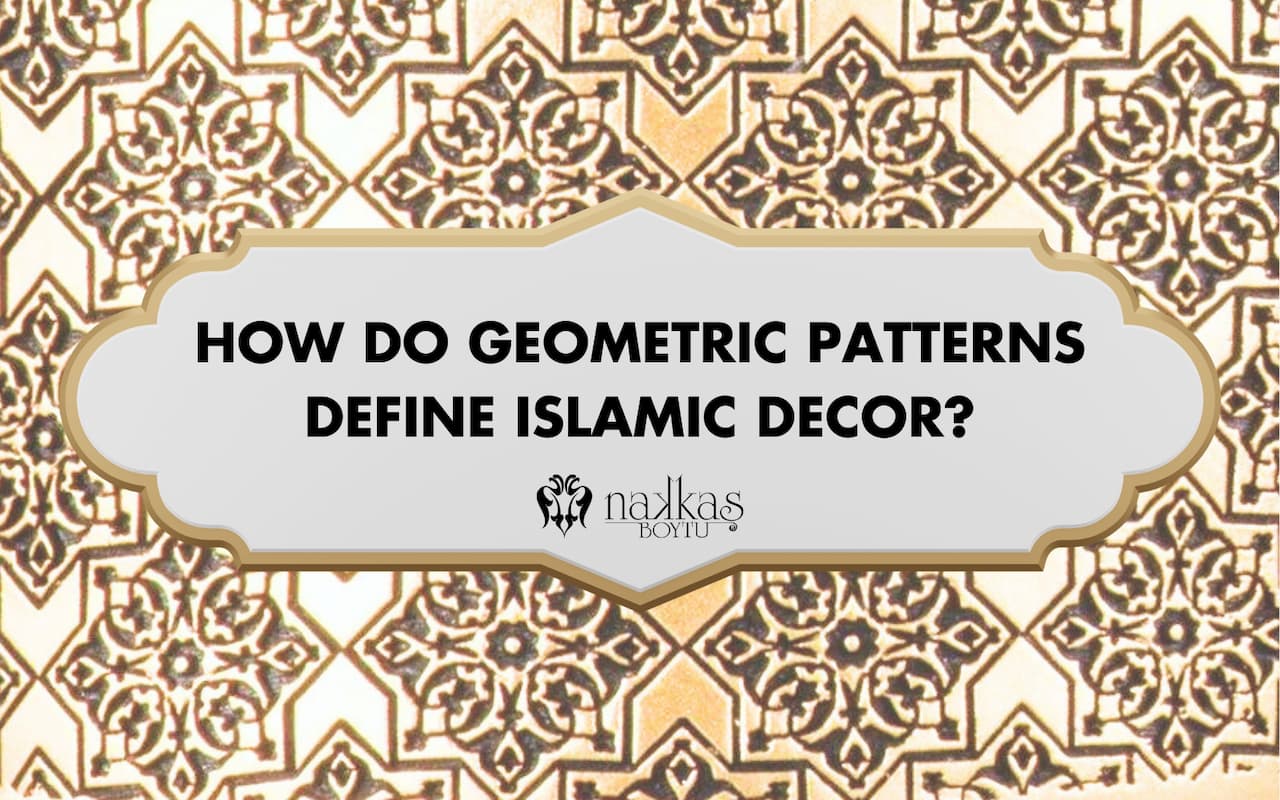What are Common Islamic Symbols and Meanings?
- Crescent
- Star and Crescent
- Allah
- Shahadah
- Rub El Hizb (Islamic Star)
- Khatim
- Kaaba
Each of these symbols reflects the core teachings, traditions, and rich history of the faith. They are visual symbols that connect believers to Islam's deep teachings and narratives.
Crescent
The Crescent represents a phase of the moon, a symbol of growth, renewal, and new beginnings in various cultures. In the Islamic context, it has special significance, marking the beginning of the holy month of Ramadan. Although not originally an Islamic emblem, the crescent became widespread with the spread of Islam and is often seen in combination with a star. Its association with the Ottoman Empire made it an important Islamic symbol, with its meaning reflecting unity, brotherhood, and the passage of time in the Islamic calendar.

Star and Crescent
The star and crescent is an iconic symbol often associated with Islam, though it is not a religious symbol per se. It consists of a crescent moon and a star, usually a five-pointed star, although variations with different numbers of points are also used. The Star and the Crescent symbolize the faith and belief system of Islam. On their own, the crescent moon represents the moon's phases, while the star represents divine light and guidance. Although its origins are not exclusively Islamic, the importance of this symbol increased under the influence of the Ottoman Empire. Today, it adorns Islamic banners, national flags, and seals and is seen as a sign of unity, brotherhood, and the search for wisdom and peace in the Muslim world.

The word of Allah
Allah symbolizes the one and only God in Islam, the all-knowing and all-powerful Creator of the universe. Written in elegant Arabic script, the word "Allah" is more than just a name; it encapsulates the essence of Islamic monotheism. This calligraphy, often adorned in mosques and religious artifacts, serves as a constant reminder of God's omnipresence and the central role He plays in the lives of Muslims, guiding their faith and actions.

Shahadah

Rub El Hizb (Islamic Star)
The Rub el Hizb, also known as the Islamic Star, is an eight-pointed star that is a common symbol in Islamic art and architecture. It is formed by overlapping two squares at a 45-degree angle. Rub El Hizb, symbolizes the meticulous division and organization of the Quran. Originating from its use to demarcate the end of Quranic sections, this emblem serves as a visual guide for readers, aiding in the recitation and reflection of the sacred verses. Beyond its functional role, the Rub El Hizb also embodies the harmony, structure, and divine wisdom encapsulated within the holy text, reminding believers of the Quran's central place in Islamic teachings and life.

Khatim

Kaaba
As the heart of Islam, the Kaaba is a significant Islam religion symbol representing the unifying focal point of Muslim devotion and worship. Located in Mecca, this cube-shaped structure is the spiritual center to which millions of believers turn during their daily worship. Every year, the Kaaba is the site of pilgrims performing the Hajj, a sacred ritual and one of the Five Pillars of Islam. Hajj is a spiritual journey that strengthens the bond between the believer and the divine.

What are the Most Common Islamic Symbols Used in Decor?
The crescent and the moon stand out as the quintessential symbol of Islam in decor. A look at various symbol of Islam images reveals their widespread use, reflecting the deep heritage of Islamic culture. Beyond mere aesthetics, these symbols resonate deeply and inspire spiritual bonds and respect among believers.
Why is the Crescent Moon Popular in Islamic Decor?
The Crescent Moon's popularity in Islamic decor stems from its deep-rooted significance in Islamic history and culture. Paired with a star, this emblem has transcended time, becoming a universally recognized symbol of Islam. Its frequent use in decor, from architectural designs to household items, reflects the spiritual and cultural importance it holds for Muslims.
How to Use Islamic Symbols as Decor?
To use Islamic symbols as decor, one must first understand and respect their deeper meaning. Over 90% of traditional Islamic art focuses on abstract and geometric patterns and avoids vivid depictions of life. Emphasizing symbols pointing to Allah, Islamic decor prioritizes functionality and simplicity, reminiscent of the Prophet's battle banners, usually in plain colors such as black, white, gray, or yellow. With these principles, one can create decor that resonates with the spiritual depth and traditions that Muslims value.
How is Crescent Moon Used in Modern Homes?
The crescent moon motif is used in various ways such as decorative element on table, decorative motif in wall art, children’s room decor in modern homes, reflecting both aesthetic and symbolic aspects. The crescent moon serves as a distinctive decorative element, echoing its deep-rooted significance in Islamic culture. Drawing inspiration from the rich traditions of Islamic art, contemporary designers seamlessly integrate the crescent into various decor items, from wall art to lamps. This thoughtful incorporation pays homage to Islamic heritage and adds a touch of elegance and spiritual depth to contemporary interiors.Here are some of the common uses:
- Decorative Elements: The crescent moon is often used as a decorative motif in home decor. It can be found in wall art, tapestries, and as patterns on cushions, bedding, and curtains.
- Children's Room Decor: The crescent moon is a popular theme in nurseries and children's rooms, evoking a sense of whimsy and wonder. Outdoor Decorations: In gardens and patios, crescent moon shapes are seen in wind chimes, garden stakes, and even as part of outdoor lighting fixtures, adding a mystical or serene quality to outdoor spaces.
- Furniture Design: Some modern furniture pieces incorporate the crescent shape for both aesthetic and ergonomic purposes. This can be seen in curved crescent-shaped chairs, sofas, and even in the design of some tables.
- Architectural Elements: In some modern homes, the crescent shape is incorporated into the architecture itself, such as in the design of windows, archways, or as part of the overall structure.
- Lighting Fixtures: Crescent moon shapes are popular in lighting design, seen in wall sconces, hanging pendants, and table lamps, often providing a soft, diffused light that enhances the ambiance of a room.
How is the Mecca and the Kaaba Used in Islamic Decor?
In Islamic decor, Mecca and the Kaaba serve as central motifs, symbolizing the heart of Muslim faith. Kaaba is a cube-shaped structure at the center of the Masjid al-Haram (the Sacred Mosque)These sacred symbols have transitioned from traditional settings to modern interiors. Designers are increasingly incorporating images of the Kaaba and representations of Mecca into wall hangings, frames, and even digital art pieces. This decor reflects the reverence for sacred places and gives a spiritual touch to the home.
How Do Islamic Geometric Patterns Enhance Decorative Design?
Islamic geometric patterns enhance decorative design by adding depth, complexity, and a timeless aesthetic. A staple of Islamic art for centuries, geometric patterns seamlessly blend tradition with modernity. Their repetitive and symmetrical designs are pleasing to the eye and evoke a sense of spiritual harmony. Whether decorating the walls of a contemporary living room or adorning architectural masterpieces, these patterns serve as a bridge between historical art and modern design sensibilities.
How Does Islamic Calligraphy Enhance Home Decor?
Islamic calligraphy enhances home décor by adding aesthetic and cultural dimensions. This art form's graceful lines and intricate patterns add an artistic touch. More than just wall art or accessories, it enriches the ambiance of a space when incorporated into furniture and architectural details. By integrating Islamic calligraphy, the homeowners express their cultural and religious identity and use reflections of their heritage in their homes.
What Are the Symbolic Colors in Islamic Art and Culture?
In Islam, colors carry deep cultural, religious, and historical values, often symbolizing emotions, beliefs, and narratives. These colors go beyond visual appeal, resonating with the essence of faith, history, and spirituality. In Islamic culture, colors serve as markers of identity, unity, and a shared heritage, creating a vibrant representation of meanings within the Muslim world.
What are the 5 Colors in Islam?
According to a study conducted at Sains Islamic University Malaysia, there are five basic colors in Islam: white, black, green, red, and yellow. Each of these colors has special meaning and significance in Islamic culture and history.
What Colors are Mentioned in the Quran?
The Quran mentions several colors, including white, black, green, red, and yellow. White symbolizes purity and peace, black often represents darkness or evil, green is linked with paradise and spiritual bliss, red denotes severity or warning, and yellow is sometimes associated with decay. Each color, deeply embedded in the verses of the Quran, holds profound meanings and insights into the Islamic worldview.
Are you inspired by the rich texture and deep meaning of Islamic symbols? Dive deep into the world of Islamic art and decor with Nakkaş Boytu. Since 1997, we have been building a bridge between the past and the future by bringing traditional symbols to life in three-dimensional art. Let our works reflect centuries of tradition and culture and bring your space to life.









